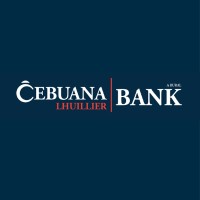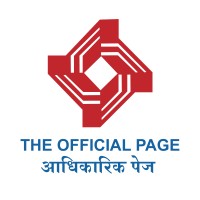
Cebuana Lhuillier Bank Company Cyber Security Posture
cebuanalhuillierbank.comCebuana Lhuillier Rural Bank (CLRB) was established in June 1998 as the banking arm of PJ Lhuillier, Inc. Regulated by the Bangko Sentral ng Pilipinas, the Bank continues to serve the underserved Filipinos through its affordable and accessible banking transactions. The Bank offers products, from savings, which cater to micro, small, and medium clients to loans which provide clients an array of facilities that they can apply to. A variety of other services offered are bills payment, load top-up, and money transfer. Geared towards financial inclusion, CLRB has already established five (5) branches in the Philippines, with plans of increasing its footprint nationwide. The Bank is now widening its reach through its cash agent Cebuana Lhuillier with 2,500 branches and 20,000 partner outlets to make way for greater connectivity and accessibility. The Bank is poised to achieving an ecosystem that empowers Filipino towards an affordable banking lifestyle. CLRB plans to overcome barriers to saving by educating, encouraging, and providing banking access to more of the unbanked and underbanked segment.
CLB Company Details
cebuana-lhuillier-rural-bank
293 employees
2424
522
Banking
cebuanalhuillierbank.com
Scan still pending
CEB_1365858
In-progress
Between 800 and 900
This score is AI-generated and less favored by cyber insurers, who prefer the TPRM score.
 CLB Global Score
CLB Global Score.png)

Cebuana Lhuillier Bank Company Scoring based on AI Models
| Model Name | Date | Description | Current Score Difference | Score |
|---|---|---|---|---|
| AVERAGE-Industry | 03-12-2025 | This score represents the average cybersecurity rating of companies already scanned within the same industry. It provides a benchmark to compare an individual company's security posture against its industry peers. | N/A | Between 800 and 900 |
Cebuana Lhuillier Bank Company Cyber Security News & History
| Entity | Type | Severity | Impact | Seen | Url ID | Details | View |
|---|---|---|---|---|---|---|---|
| Cebuana Lhuillier Rural Bank | Data Leak | 85 | 4 | 01/2019 | CEB171112223 | Link | |
Rankiteo Explanation : Attack with significant impact with customers data leaksDescription: Cebuana Lhuillier suffered from data breach incidents that compromised the personal information of its customers. The exposed information includes names, birth dates, email addresses, mobile numbers, and in some cases, income information, Cebuana Lhuillier told its clients in an email. Cebuana Lhuillier added that it has disconnected the affected server from the network and reported the breach to the National Privacy Commission. It advised its customers to change the passwords of all user accounts in which personal information details or portions of it are used as passwords. | |||||||
Cebuana Lhuillier Bank Company Subsidiaries

Cebuana Lhuillier Rural Bank (CLRB) was established in June 1998 as the banking arm of PJ Lhuillier, Inc. Regulated by the Bangko Sentral ng Pilipinas, the Bank continues to serve the underserved Filipinos through its affordable and accessible banking transactions. The Bank offers products, from savings, which cater to micro, small, and medium clients to loans which provide clients an array of facilities that they can apply to. A variety of other services offered are bills payment, load top-up, and money transfer. Geared towards financial inclusion, CLRB has already established five (5) branches in the Philippines, with plans of increasing its footprint nationwide. The Bank is now widening its reach through its cash agent Cebuana Lhuillier with 2,500 branches and 20,000 partner outlets to make way for greater connectivity and accessibility. The Bank is poised to achieving an ecosystem that empowers Filipino towards an affordable banking lifestyle. CLRB plans to overcome barriers to saving by educating, encouraging, and providing banking access to more of the unbanked and underbanked segment.
Access Data Using Our API

Get company history
.png)
CLB Cyber Security News
Cracking down on cybercrime: Industry collaboration for a secure digital banking ecosystem
Prevalent types of cybercrimes like online selling and investment scams along with debit/credit card fraud saw a decline based on the Philippine ...
Cebuana Lhuillier Bank taps Temenos for core banking platform
Cebuana Lhuillier Bank, a rural bank in the Philippines, has partnered with Swiss vendor Temenos to enhance and modernise its core banking ...
The biggest data breaches in Southeast Asia
Major data breaches in Southeast Asian countries evidence the region's weaknesses in the areas of cybersecurity and data protection.
Outstanding banking and finance industry champions crowned at Asian Banking & Finance Awards 2024
Asian Banking & Finance celebrates another year of excellence in the region's banking industry as it marked the 2024 Wholesale Banking Awards, ...
Cebuana Lhuillier: The Philippines' largest and leading micro-financial center redefines microfinance with all-in services
Cebuana Lhuillier continues to innovate and adapt to meet the changing needs of Filipinos, setting the standard for microfinance in the country.
Cebuana Lhuillier hit by data breach
Pawnshop chain Cebuana Lhuillier on Saturday said it discovered a data breach that affected personal information of around 900000 clients.
Over 900,000 affected by Cebuana Lhuillier data breach
Around 900000 clients of Cebuana Lhuillier were affected by a data breach that may have compromised their personal data.
Data breach hits Cebuana Lhuillier, around 900k clients affected
“We recently discovered a data breach which affected our email server that is used for marketing purposes,” the company said in a statement.
Cebuana Lhuillier, Shopee partner to empower MSMEs
The Cebuana Lhuillier-Shopee partnership enables MSMEs to accelerate their businesses further by giving current and potential customers access ...

CLB Similar Companies

Santander México
Somos un grupo financiero que ofrece productos y servicios bancarios a clientes particulares, empresas e instituciones en todos los estados de la Rep√∫blica Mexicana, con cobertura en todos los sectores de la industria. Los productos y servicios del Grupo est√°n pensados para todo tipo de clientes,

NatWest Business
At NatWest we’re committed to helping British businesses grow. We give you access to the latest insights & analysis from industry experts and our partners. If you need to ask a question about your account with us, the quickest way to get in touch is via webchat. Visit our Business homepage: htt

Promsvyazbank
OJSC Promsvyazbank (PSB) is a Russian privately-owned universal commercial bank. Founded in 1995, PSB currently ranks 9th by assets among Russian banks (Interfax as of 01/01/13). PSB offers a comprehensive range of banking services to corporate and individual customers. PSB’s domestic and interna

NatWest Group
Our ambition is simple: to succeed with our customers. Because when they succeed, so do we. Whether it’s buying a home, investing for tomorrow, growing a business, or helping our customers to build a more sustainable future, we can succeed with customers by understanding their world and what matte

Central Bank of India
Welcome to the official LinkedIn page of Central Bank of India. Central Bank of India offers a wide range of products and services for every segment. Please join us to know more about our best products & services, attractive offers and the latest updates. We invite & value your active participatio

Bank Pekao S.A.
Bank Pekao S.A. powstał w 1929 roku. Obecnie jesteśmy jedną z największych instytucji finansowych w regionie Europy Środkowo-Wschodniej i drugim, pod względem wielkości bankiem w Polsce z ok. 230 mld zł aktywów. Dzięki znaczącej sieci oddziałów obsługujemy ponad 5,7 mln klientów. Jako wiodący bank k

Frequently Asked Questions (FAQ) on Cybersecurity Incidents
CLB CyberSecurity History Information
Total Incidents: According to Rankiteo, CLB has faced 1 incidents in the past.
Incident Types: The types of cybersecurity incidents that have occurred include ['Data Leak'].
Total Financial Loss: The total financial loss from these incidents is estimated to be {total_financial_loss}.
Cybersecurity Posture: The company's overall cybersecurity posture is described as Cebuana Lhuillier Rural Bank (CLRB) was established in June 1998 as the banking arm of PJ Lhuillier, Inc. Regulated by the Bangko Sentral ng Pilipinas, the Bank continues to serve the underserved Filipinos through its affordable and accessible banking transactions. The Bank offers products, from savings, which cater to micro, small, and medium clients to loans which provide clients an array of facilities that they can apply to. A variety of other services offered are bills payment, load top-up, and money transfer. Geared towards financial inclusion, CLRB has already established five (5) branches in the Philippines, with plans of increasing its footprint nationwide. The Bank is now widening its reach through its cash agent Cebuana Lhuillier with 2,500 branches and 20,000 partner outlets to make way for greater connectivity and accessibility. The Bank is poised to achieving an ecosystem that empowers Filipino towards an affordable banking lifestyle. CLRB plans to overcome barriers to saving by educating, encouraging, and providing banking access to more of the unbanked and underbanked segment..
Detection and Response: The company detects and responds to cybersecurity incidents through {description_of_detection_and_response_process}.
Incident Details
Incident 1: Ransomware Attack
Title: {Incident_Title}
Description: {Brief_description_of_the_incident}
Date Detected: {Detection_Date}
Date Publicly Disclosed: {Disclosure_Date}
Date Resolved: {Resolution_Date}
Type: {Type_of_Attack}
Attack Vector: {Attack_Vector}
Vulnerability Exploited: {Vulnerability}
Threat Actor: {Threat_Actor}
Motivation: {Motivation}
Incident 2: Data Breach
Title: {Incident_Title}
Description: {Brief_description_of_the_incident}
Date Detected: {Detection_Date}
Date Publicly Disclosed: {Disclosure_Date}
Date Resolved: {Resolution_Date}
Type: {Type_of_Attack}
Attack Vector: {Attack_Vector}
Vulnerability Exploited: {Vulnerability}
Threat Actor: {Threat_Actor}
Motivation: {Motivation}
Common Attack Types: As of now, the company has not encountered any reported incidents involving common cyberattacks.
Identification of Attack Vectors: The company identifies the attack vectors used in incidents through {description_of_identification_process}.
Impact of the Incidents
Incident 1: Ransomware Attack
Financial Loss: {Financial_Loss}
Data Compromised: {Data_Compromised}
Systems Affected: {Systems_Affected}
Downtime: {Downtime}
Operational Impact: {Operational_Impact}
Conversion Rate Impact: {Conversion_Rate_Impact}
Revenue Loss: {Revenue_Loss}
Customer Complaints: {Customer_Complaints}
Brand Reputation Impact: {Brand_Reputation_Impact}
Legal Liabilities: {Legal_Liabilities}
Identity Theft Risk: {Identity_Theft_Risk}
Payment Information Risk: {Payment_Information_Risk}
Incident 2: Data Breach
Financial Loss: {Financial_Loss}
Data Compromised: {Data_Compromised}
Systems Affected: {Systems_Affected}
Downtime: {Downtime}
Operational Impact: {Operational_Impact}
Conversion Rate Impact: {Conversion_Rate_Impact}
Revenue Loss: {Revenue_Loss}
Customer Complaints: {Customer_Complaints}
Brand Reputation Impact: {Brand_Reputation_Impact}
Legal Liabilities: {Legal_Liabilities}
Identity Theft Risk: {Identity_Theft_Risk}
Payment Information Risk: {Payment_Information_Risk}
Average Financial Loss: The average financial loss per incident is {average_financial_loss}.
Commonly Compromised Data Types: The types of data most commonly compromised in incidents are {list_of_commonly_compromised_data_types}.
Incident 1: Ransomware Attack
Entity Name: {Entity_Name}
Entity Type: {Entity_Type}
Industry: {Industry}
Location: {Location}
Size: {Size}
Customers Affected: {Customers_Affected}
Incident 2: Data Breach
Entity Name: {Entity_Name}
Entity Type: {Entity_Type}
Industry: {Industry}
Location: {Location}
Size: {Size}
Customers Affected: {Customers_Affected}
Response to the Incidents
Incident 1: Ransomware Attack
Incident Response Plan Activated: {Yes/No}
Third Party Assistance: {Yes/No}
Law Enforcement Notified: {Yes/No}
Containment Measures: {Containment_Measures}
Remediation Measures: {Remediation_Measures}
Recovery Measures: {Recovery_Measures}
Communication Strategy: {Communication_Strategy}
Adaptive Behavioral WAF: {Adaptive_Behavioral_WAF}
On-Demand Scrubbing Services: {On_Demand_Scrubbing_Services}
Network Segmentation: {Network_Segmentation}
Enhanced Monitoring: {Enhanced_Monitoring}
Incident 2: Data Breach
Incident Response Plan Activated: {Yes/No}
Third Party Assistance: {Yes/No}
Law Enforcement Notified: {Yes/No}
Containment Measures: {Containment_Measures}
Remediation Measures: {Remediation_Measures}
Recovery Measures: {Recovery_Measures}
Communication Strategy: {Communication_Strategy}
Adaptive Behavioral WAF: {Adaptive_Behavioral_WAF}
On-Demand Scrubbing Services: {On_Demand_Scrubbing_Services}
Network Segmentation: {Network_Segmentation}
Enhanced Monitoring: {Enhanced_Monitoring}
Incident Response Plan: The company's incident response plan is described as {description_of_incident_response_plan}.
Third-Party Assistance: The company involves third-party assistance in incident response through {description_of_third_party_involvement}.
Data Breach Information
Incident 2: Data Breach
Type of Data Compromised: {Type_of_Data}
Number of Records Exposed: {Number_of_Records}
Sensitivity of Data: {Sensitivity_of_Data}
Data Exfiltration: {Yes/No}
Data Encryption: {Yes/No}
File Types Exposed: {File_Types}
Personally Identifiable Information: {Yes/No}
Prevention of Data Exfiltration: The company takes the following measures to prevent data exfiltration: {description_of_prevention_measures}.
Handling of PII Incidents: The company handles incidents involving personally identifiable information (PII) through {description_of_handling_process}.
Ransomware Information
Incident 1: Ransomware Attack
Ransom Demanded: {Ransom_Amount}
Ransom Paid: {Ransom_Paid}
Ransomware Strain: {Ransomware_Strain}
Data Encryption: {Yes/No}
Data Exfiltration: {Yes/No}
Ransom Payment Policy: The company's policy on paying ransoms in ransomware incidents is described as {description_of_ransom_payment_policy}.
Data Recovery from Ransomware: The company recovers data encrypted by ransomware through {description_of_data_recovery_process}.
Regulatory Compliance
Incident 1: Ransomware Attack
Regulations Violated: {Regulations_Violated}
Fines Imposed: {Fines_Imposed}
Legal Actions: {Legal_Actions}
Regulatory Notifications: {Regulatory_Notifications}
Incident 2: Data Breach
Regulations Violated: {Regulations_Violated}
Fines Imposed: {Fines_Imposed}
Legal Actions: {Legal_Actions}
Regulatory Notifications: {Regulatory_Notifications}
Regulatory Frameworks: The company complies with the following regulatory frameworks regarding cybersecurity: {list_of_regulatory_frameworks}.
Ensuring Regulatory Compliance: The company ensures compliance with regulatory requirements through {description_of_compliance_measures}.
Lessons Learned and Recommendations
Incident 1: Ransomware Attack
Lessons Learned: {Lessons_Learned}
Incident 2: Data Breach
Lessons Learned: {Lessons_Learned}
Incident 1: Ransomware Attack
Recommendations: {Recommendations}
Incident 2: Data Breach
Recommendations: {Recommendations}
Key Lessons Learned: The key lessons learned from past incidents are {list_of_key_lessons_learned}.
Implemented Recommendations: The company has implemented the following recommendations to improve cybersecurity: {list_of_implemented_recommendations}.
References
Additional Resources: Stakeholders can find additional resources on cybersecurity best practices at {list_of_additional_resources}.
Investigation Status
Incident 1: Ransomware Attack
Investigation Status: {Investigation_Status}
Incident 2: Data Breach
Investigation Status: {Investigation_Status}
Communication of Investigation Status: The company communicates the status of incident investigations to stakeholders through {description_of_communication_process}.
Stakeholder and Customer Advisories
Incident 1: Ransomware Attack
Stakeholder Advisories: {Stakeholder_Advisories}
Customer Advisories: {Customer_Advisories}
Incident 2: Data Breach
Stakeholder Advisories: {Stakeholder_Advisories}
Customer Advisories: {Customer_Advisories}
Advisories Provided: The company provides the following advisories to stakeholders and customers following an incident: {description_of_advisories_provided}.
Initial Access Broker
Incident 1: Ransomware Attack
Entry Point: {Entry_Point}
Reconnaissance Period: {Reconnaissance_Period}
Backdoors Established: {Backdoors_Established}
High Value Targets: {High_Value_Targets}
Data Sold on Dark Web: {Yes/No}
Incident 2: Data Breach
Entry Point: {Entry_Point}
Reconnaissance Period: {Reconnaissance_Period}
Backdoors Established: {Backdoors_Established}
High Value Targets: {High_Value_Targets}
Data Sold on Dark Web: {Yes/No}
Monitoring and Mitigation of Initial Access Brokers: The company monitors and mitigates the activities of initial access brokers through {description_of_monitoring_and_mitigation_measures}.
Post-Incident Analysis
Incident 1: Ransomware Attack
Root Causes: {Root_Causes}
Corrective Actions: {Corrective_Actions}
Incident 2: Data Breach
Root Causes: {Root_Causes}
Corrective Actions: {Corrective_Actions}
Post-Incident Analysis Process: The company's process for conducting post-incident analysis is described as {description_of_post_incident_analysis_process}.
Corrective Actions Taken: The company has taken the following corrective actions based on post-incident analysis: {list_of_corrective_actions_taken}.
Additional Questions
General Information
Ransom Payment History: The company has {paid/not_paid} ransoms in the past.
Last Ransom Demanded: The amount of the last ransom demanded was {last_ransom_amount}.
Last Attacking Group: The attacking group in the last incident was {last_attacking_group}.
Incident Details
Most Recent Incident Detected: The most recent incident detected was on {most_recent_incident_detected_date}.
Most Recent Incident Publicly Disclosed: The most recent incident publicly disclosed was on {most_recent_incident_publicly_disclosed_date}.
Most Recent Incident Resolved: The most recent incident resolved was on {most_recent_incident_resolved_date}.
Impact of the Incidents
Highest Financial Loss: The highest financial loss from an incident was {highest_financial_loss}.
Most Significant Data Compromised: The most significant data compromised in an incident was {most_significant_data_compromised}.
Most Significant System Affected: The most significant system affected in an incident was {most_significant_system_affected}.
Response to the Incidents
Third-Party Assistance in Most Recent Incident: The third-party assistance involved in the most recent incident was {third_party_assistance_in_most_recent_incident}.
Containment Measures in Most Recent Incident: The containment measures taken in the most recent incident were {containment_measures_in_most_recent_incident}.
Data Breach Information
Most Sensitive Data Compromised: The most sensitive data compromised in a breach was {most_sensitive_data_compromised}.
Number of Records Exposed: The number of records exposed in the most significant breach was {number_of_records_exposed}.
Ransomware Information
Highest Ransom Demanded: The highest ransom demanded in a ransomware incident was {highest_ransom_demanded}.
Highest Ransom Paid: The highest ransom paid in a ransomware incident was {highest_ransom_paid}.
Regulatory Compliance
Highest Fine Imposed: The highest fine imposed for a regulatory violation was {highest_fine_imposed}.
Most Significant Legal Action: The most significant legal action taken for a regulatory violation was {most_significant_legal_action}.
Lessons Learned and Recommendations
Most Significant Lesson Learned: The most significant lesson learned from past incidents was {most_significant_lesson_learned}.
Most Significant Recommendation Implemented: The most significant recommendation implemented to improve cybersecurity was {most_significant_recommendation_implemented}.
References
Most Recent Source: The most recent source of information about an incident is {most_recent_source}.
Most Recent URL for Additional Resources: The most recent URL for additional resources on cybersecurity best practices is {most_recent_url}.
Investigation Status
Current Status of Most Recent Investigation: The current status of the most recent investigation is {current_status_of_most_recent_investigation}.
Stakeholder and Customer Advisories
Most Recent Stakeholder Advisory: The most recent stakeholder advisory issued was {most_recent_stakeholder_advisory}.
Most Recent Customer Advisory: The most recent customer advisory issued was {most_recent_customer_advisory}.
Initial Access Broker
Most Recent Entry Point: The most recent entry point used by an initial access broker was {most_recent_entry_point}.
Most Recent Reconnaissance Period: The most recent reconnaissance period for an incident was {most_recent_reconnaissance_period}.
Post-Incident Analysis
Most Significant Root Cause: The most significant root cause identified in post-incident analysis was {most_significant_root_cause}.
Most Significant Corrective Action: The most significant corrective action taken based on post-incident analysis was {most_significant_corrective_action}.
What Do We Measure?
















Every week, Rankiteo analyzes billions of signals to give organizations a sharper, faster view of emerging risks. With deeper, more actionable intelligence at their fingertips, security teams can outpace threat actors, respond instantly to Zero-Day attacks, and dramatically shrink their risk exposure window.
These are some of the factors we use to calculate the overall score:
Identify exposed access points, detect misconfigured SSL certificates, and uncover vulnerabilities across the network infrastructure.
Gain visibility into the software components used within an organization to detect vulnerabilities, manage risk, and ensure supply chain security.
Monitor and manage all IT assets and their configurations to ensure accurate, real-time visibility across the company's technology environment.
Leverage real-time insights on active threats, malware campaigns, and emerging vulnerabilities to proactively defend against evolving cyberattacks.




